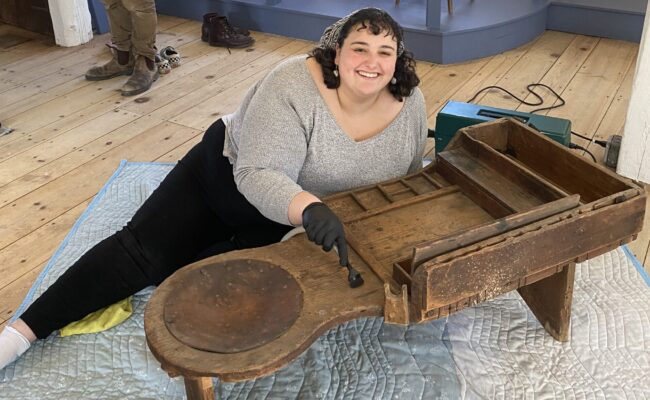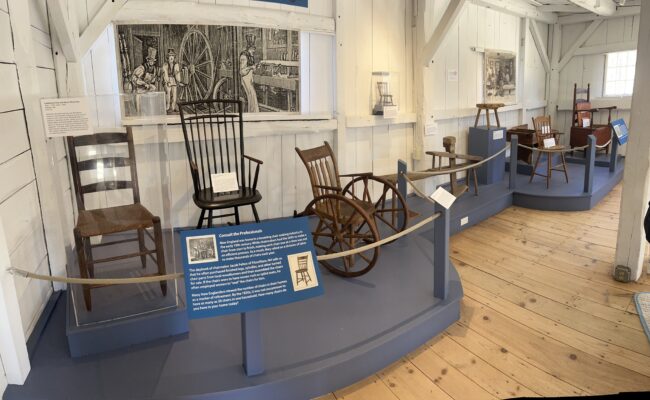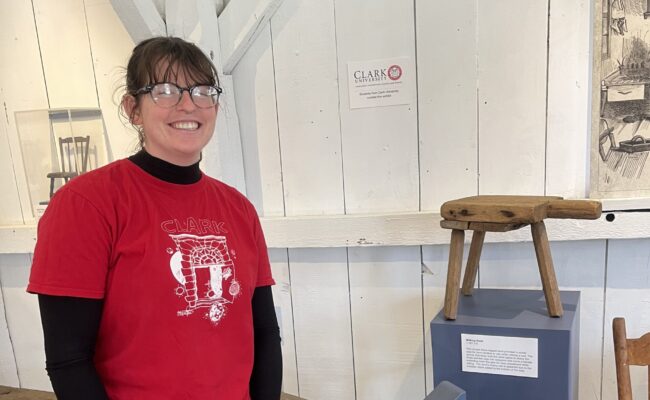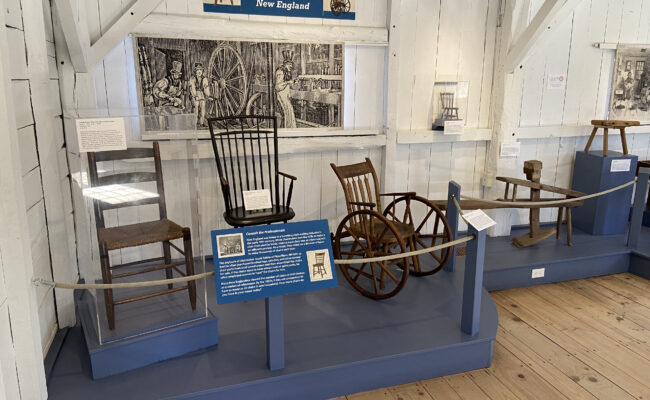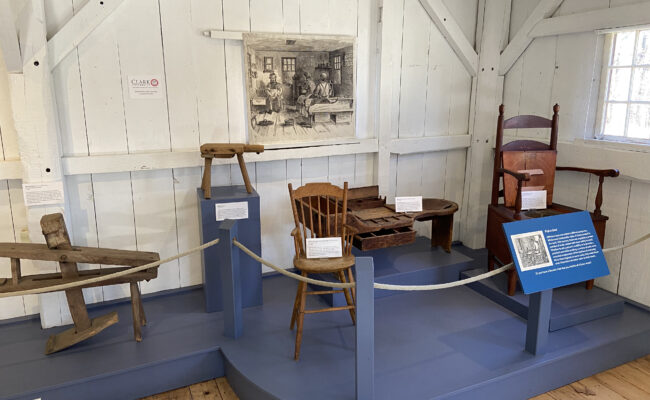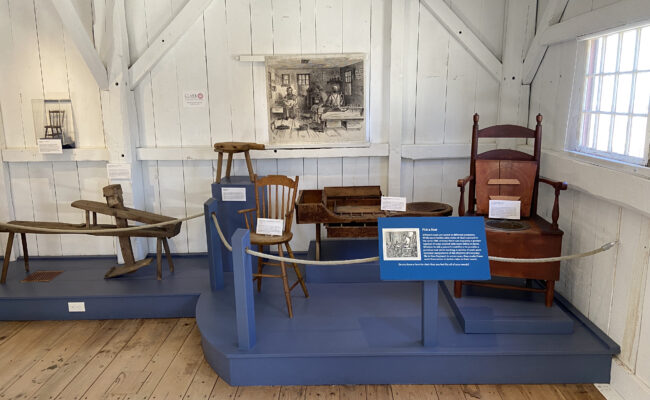A front-row seat to 19th-century New England
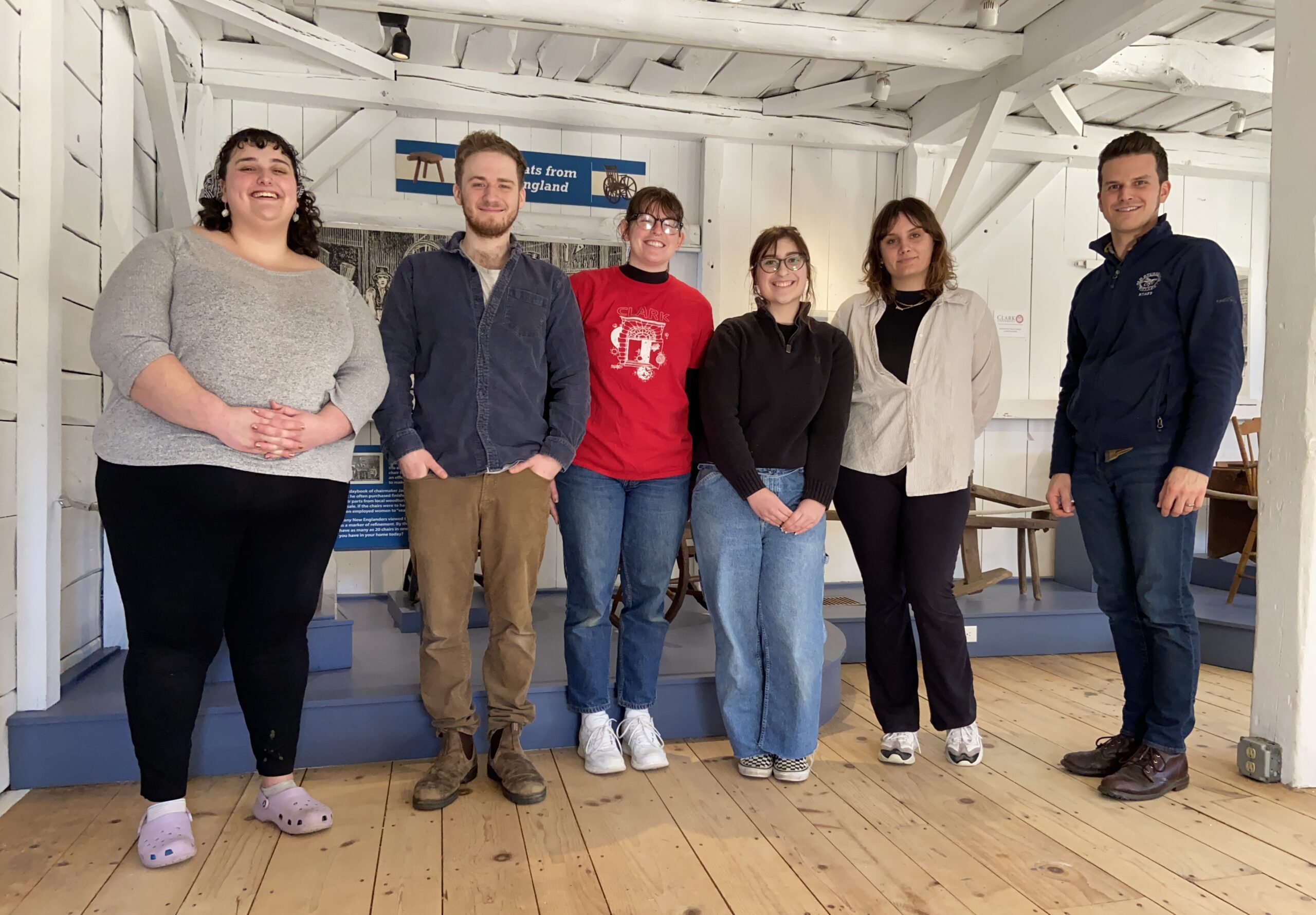
If you look closely, chairs can tell stories about the people who have sat in them. Clark students uncovered those stories in a recent course, immersing themselves in the lives of early 19th-century New Englanders who used a swath of chairs — from a shoemaker’s bench to a milking stool.
The course, Public History, was taught by Derek Heidemann ’09, M.A. ’10, a history professor who is also the director of collections and research at Old Sturbridge Village in Sturbridge, Massachusetts. Heidemann asked each student to select a chair from the museum’s collection and research the role that chair played in the 1800s, when the chair-making industry boomed in New England. The course culminated with the installation of those chairs in an exhibit at OSV titled “Nine Seats from New England.”
“You can see students’ sheer excitement when they get to handle and study objects from the early 19th-century,” says Heidemann. “They can unlock the stories associated with seemingly ordinary everyday objects, like the many seats featured in the exhibit, and pass those stories along to OSV visitors in ways that they can connect to their own lives today.”
Each student considered their choice of chair with a handful of questions: Is this a practical seat for working? Does this aid in a person’s accessibility? Does the number of chairs in one’s home serve as a marker of refinement?
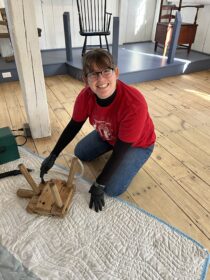
Maire O’Donnell ’23, an art history and Spanish major, studied a milking stool and spent a lot of time at the museum’s farm, learning the ins and outs of dairy practices.
“While the chair itself was certainly very interesting, I was attracted to what the chair allowed the people using it to do, and the value a cow brought to New England families,” she says. “The chair’s specific point of social interaction — between animals and people — was very important.”
O’Donnell learned that families with cows often exchanged products with other families, for example, trading some milk or cheese for fruit from a neighbor’s apple tree.
Hannah Friend ’23, M.A. ’24, a history major, worked with the shoemaker’s bench.
“The shoemaker who owned it made adjustments so the drawers pulled more easily and put a leather seat on to make it more comfortable,” says Friend. “I thought the bench had a nice personality. You can look at it and say, ‘Someone used this. Someone loved this.’”
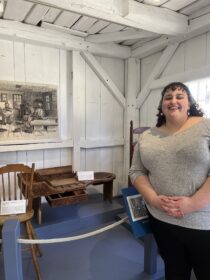
Friend learned that farmers often made shoes during the off-season. The shoemaking industry also involved women, who sewed part of the shoes.
“It fostered a domestic economy and a women’s economy in Massachusetts, which was exciting to find,” she says.
The exhibit also includes a commode chair, doll chair, Windsor rocking chair, child’s Windsor-style highchair, wheelchair, shaving horse, and a Ladderback chair with a woven rush seat made by local Nipmuc woman Sarah (Brown) Sprague, one of the only surviving 19th-century chairs known to have been seated by an Indigenous person.
Students wrote labels for their artifacts and helped install the exhibit.
“Sharing such tangible history with visitors is what makes museum collections so powerful and Clark students are always excellent stewards of that history,” says Heidemann.
O’Donnell and Friend will return to museum work after graduation. O’Donnell will be a summer intern at the Musée national d’histoire et d’art in Luxembourg through Clark’s Henry J. and Erna D. Leir Luxembourg Program. Friend will return to Old Sturbridge Village this summer, documenting artifacts and working in the research library.
The chair exhibit is on display in Old Sturbridge Village’s David Wight Community Gallery through the end of October. The Public History course is offered each fall.

